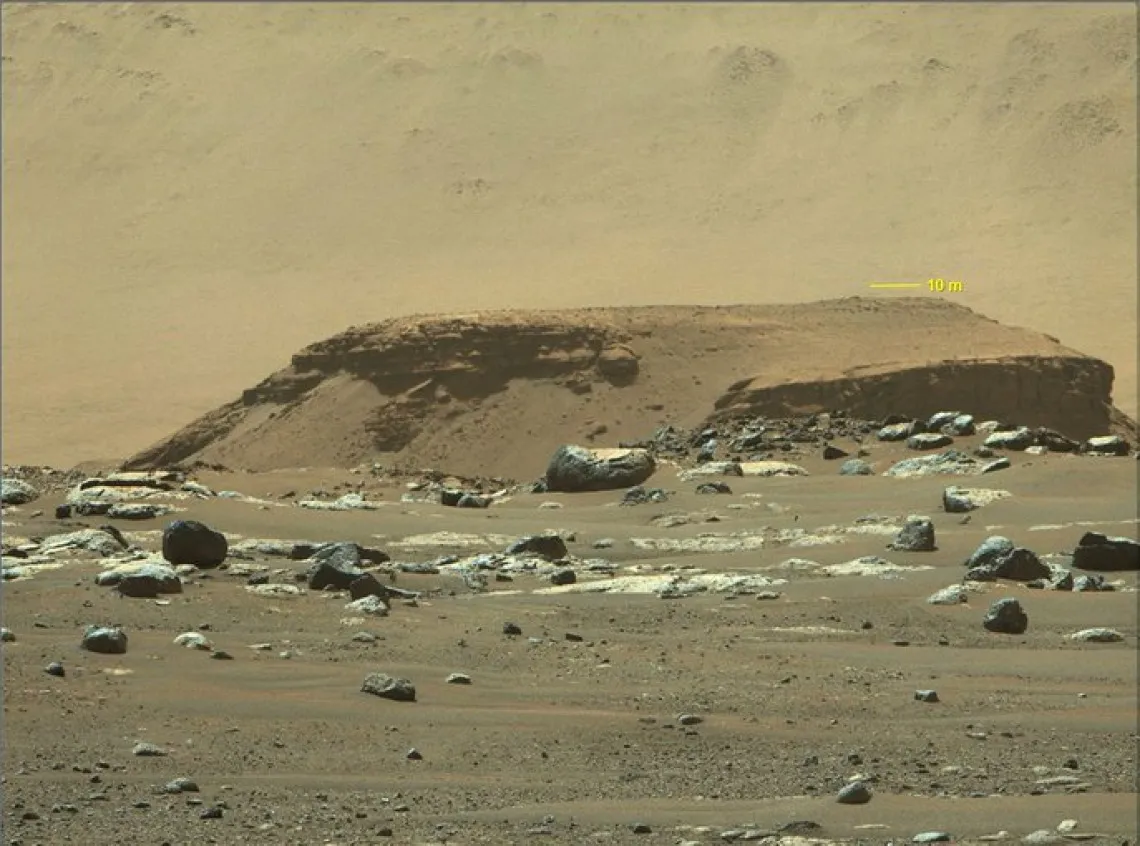Lipid Biosignatures in Hypersaline Lakes

An image of a fan-shaped deposit of sediments known as a delta shot from the Mastcam-Z instrument on NASA’s Perseverance rover, as viewed from the “Octavia E. Butler Landing” site.
NASA/JPL-CALTECH
NASA-supported researchers have studied the production of organic matter in hypersaline lakes that share some similarities with lakes thought to be present on ancient Mars in the area of Jezero crater.
Today, the surface of Mars is dry and barren. However, data from orbital spacecraft and NASA’s Perseverance rover indicate that hypersaline waters persisted in Jezero crater on Mars in the planet’s ancient past. Astrobiologists have been studying hypersaline lakes on Earth in order to better understand the potential for life in these ancient martian lakes.
The new study focused on lipid biomarkers in hypersaline lakes of the Cariboo Plateau, British Columbia. These lakes in western Canada are rich in magnesium sulfide (MgSO4) or sodium carbonate (Na2CO3), and are thought to have a similar water composition to the lakes that could have been present on early Mars.
The results indicate that hypersaline environments rich in MgSO4 are habitable for life and harbor an abundance of microbial biosignatures. In addition, SO4-dominated lakes produced more abundant organic matter than those dominated by Na2CO3 at a similar salinity.
The study, “Lipid Biosignatures From SO4-Rich Hypersaline Lakes of the Cariboo Plateau,” was published in JGR Biogeosciences.
